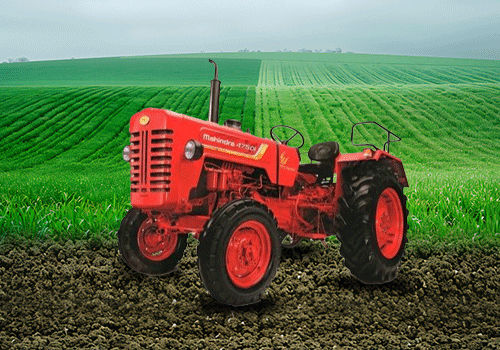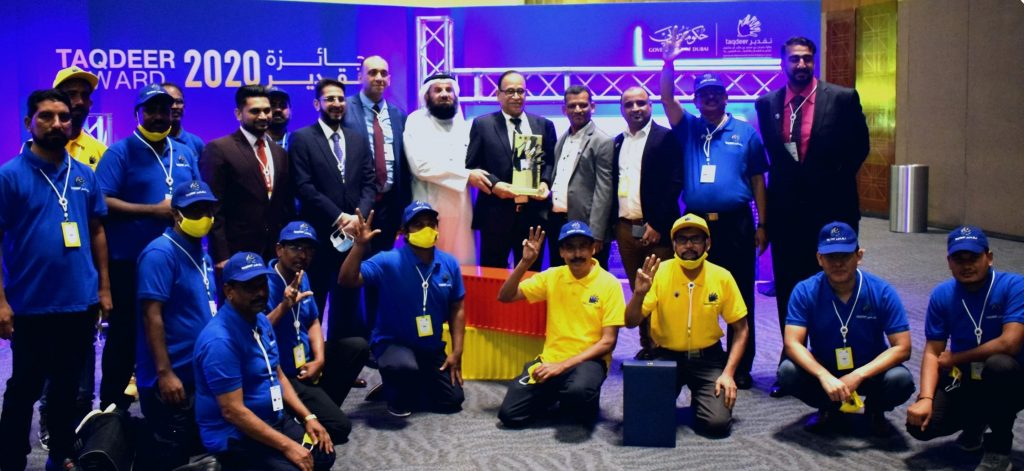Mahindra Tractor 475 Price and Specifications: A Complete Guide
Mahindra is one of the most trusted tractor brands in India, known for producing durable, high-performance, and cost-effective tractors. The Mahindra Tractor 475 is among the most popular models in the Mahindra lineup, offering excellent power, fuel efficiency, and reliability. This article provides an in-depth look at the Mahindra Tractor 475 price, specifications, and how it compares to other Mahindra models, including the Mahindra Tractor 575 price, Mahindra 265 price, Mahindra 585 DI XP Plus price, and Mahindra 275 DI XP Plus price.
Mahindra Tractor 475 Price in India
The Mahindra Tractor 475 price in India varies based on location, dealer discounts, and optional features. On average, the Mahindra 475 DI is priced between ₹5.5 Lakh - 6 Lakh (ex-showroom). Prices may vary based on state-specific taxes, accessories, and financing options.
Mahindra 475 DI Tractor: Specifications and Features
Engine and Performance
Engine Power: 42 HP
Cylinders: 4
Engine Rated RPM: 1900
Cooling System: Water-cooled
Fuel Tank Capacity: 48 liters
The Mahindra 475 DI is designed for heavy-duty agricultural work, ensuring high performance with fuel efficiency. The 4-cylinder engine delivers excellent power for fieldwork, including plowing, tilling, and hauling loads.
Transmission and Clutch
Gearbox: 8 Forward + 2 Reverse
Clutch Type: Single/Dual-clutch options
Brakes: Dry disc / Oil-immersed brakes
Steering Type: Mechanical / Power Steering (optional)
With 8 forward and 2 reverse gears, the tractor ensures smooth operation and adaptability to different soil conditions.
Hydraulics and PTO
Hydraulic Lifting Capacity: 1500 kg
PTO HP: 38 HP
PTO RPM: 540
The high lifting capacity makes the Mahindra 475 DI suitable for carrying heavy implements like rotavators, cultivators, and seeders.
Comparison with Other Mahindra Tractors
Mahindra Tractor 575 Price & Features
Engine Power: 47 HP
Price Range: ₹6.21 lakh - ₹7 lakh
Hydraulic Capacity: 1800 kg
Best For: Large-scale farming and commercial use
The Mahindra Tractor 575 price is slightly higher than the 475 DI, but it offers increased horsepower and lifting capacity, making it ideal for heavy agricultural tasks.
Mahindra 265 Price & Features
Engine Power: 30 HP
Price Range: ₹4.5 lakh - ₹5.00 lakh
Hydraulic Capacity: 1200 kg
Best For: Small and medium-sized farms
The Mahindra 265 price is lower compared to the 475 DI, making it an excellent option for farmers with smaller landholdings who require a reliable tractor with good fuel efficiency.
Mahindra 585 DI XP Plus Price & Features
Engine Power: 50 HP
Price Range: ₹7.49 lakh - ₹7.81 lakh
Hydraulic Capacity: 1850 kg
Best For: Heavy-duty farm operations
The Mahindra 585 DI XP Plus price is higher than the Mahindra 475 DI but offers better performance for larger farms with high-power requirements.
Mahindra 275 DI XP Plus Price & Features
Engine Power: 39 HP
Price Range: ₹5.09 lakh - ₹6.3 lakh
Hydraulic Capacity: 1200 kg
Best For: Mid-sized farms
The Mahindra 275 DI XP Plus price falls between the Mahindra 265 and Mahindra 475 DI, offering a balanced performance suitable for farmers looking for a budget-friendly yet powerful tractor.
Why Choose Mahindra 475 DI?
Affordable Pricing: The Mahindra Tractor 475 price is competitive, making it a cost-effective choice for Indian farmers.
Fuel Efficiency: The engine is designed for maximum fuel economy, reducing operational costs.
Versatility: Suitable for multiple applications like plowing, seeding, and haulage.
Reliability: Mahindra’s strong service network ensures easy availability of spare parts and maintenance support.
Final Verdict
The Mahindra 475 DI is an excellent choice for farmers who need a powerful yet budget-friendly tractor. While the Mahindra Tractor 575 price, Mahindra 265 price, Mahindra 585 DI XP Plus price, and Mahindra 275 DI XP Plus price may vary based on features and horsepower, the Mahindra 475 DI remains a popular model due to its balanced performance, fuel efficiency, and affordability.
For the latest Mahindra tractor price updates, discounts, and financing options, visit your nearest Mahindra dealership or check online details with KhetiGaadi Website.
https://khetigaadi.com/new-tractor-model/mahindra-475-di/en
Mahindra is one of the most trusted tractor brands in India, known for producing durable, high-performance, and cost-effective tractors. The Mahindra Tractor 475 is among the most popular models in the Mahindra lineup, offering excellent power, fuel efficiency, and reliability. This article provides an in-depth look at the Mahindra Tractor 475 price, specifications, and how it compares to other Mahindra models, including the Mahindra Tractor 575 price, Mahindra 265 price, Mahindra 585 DI XP Plus price, and Mahindra 275 DI XP Plus price.
Mahindra Tractor 475 Price in India
The Mahindra Tractor 475 price in India varies based on location, dealer discounts, and optional features. On average, the Mahindra 475 DI is priced between ₹5.5 Lakh - 6 Lakh (ex-showroom). Prices may vary based on state-specific taxes, accessories, and financing options.
Mahindra 475 DI Tractor: Specifications and Features
Engine and Performance
Engine Power: 42 HP
Cylinders: 4
Engine Rated RPM: 1900
Cooling System: Water-cooled
Fuel Tank Capacity: 48 liters
The Mahindra 475 DI is designed for heavy-duty agricultural work, ensuring high performance with fuel efficiency. The 4-cylinder engine delivers excellent power for fieldwork, including plowing, tilling, and hauling loads.
Transmission and Clutch
Gearbox: 8 Forward + 2 Reverse
Clutch Type: Single/Dual-clutch options
Brakes: Dry disc / Oil-immersed brakes
Steering Type: Mechanical / Power Steering (optional)
With 8 forward and 2 reverse gears, the tractor ensures smooth operation and adaptability to different soil conditions.
Hydraulics and PTO
Hydraulic Lifting Capacity: 1500 kg
PTO HP: 38 HP
PTO RPM: 540
The high lifting capacity makes the Mahindra 475 DI suitable for carrying heavy implements like rotavators, cultivators, and seeders.
Comparison with Other Mahindra Tractors
Mahindra Tractor 575 Price & Features
Engine Power: 47 HP
Price Range: ₹6.21 lakh - ₹7 lakh
Hydraulic Capacity: 1800 kg
Best For: Large-scale farming and commercial use
The Mahindra Tractor 575 price is slightly higher than the 475 DI, but it offers increased horsepower and lifting capacity, making it ideal for heavy agricultural tasks.
Mahindra 265 Price & Features
Engine Power: 30 HP
Price Range: ₹4.5 lakh - ₹5.00 lakh
Hydraulic Capacity: 1200 kg
Best For: Small and medium-sized farms
The Mahindra 265 price is lower compared to the 475 DI, making it an excellent option for farmers with smaller landholdings who require a reliable tractor with good fuel efficiency.
Mahindra 585 DI XP Plus Price & Features
Engine Power: 50 HP
Price Range: ₹7.49 lakh - ₹7.81 lakh
Hydraulic Capacity: 1850 kg
Best For: Heavy-duty farm operations
The Mahindra 585 DI XP Plus price is higher than the Mahindra 475 DI but offers better performance for larger farms with high-power requirements.
Mahindra 275 DI XP Plus Price & Features
Engine Power: 39 HP
Price Range: ₹5.09 lakh - ₹6.3 lakh
Hydraulic Capacity: 1200 kg
Best For: Mid-sized farms
The Mahindra 275 DI XP Plus price falls between the Mahindra 265 and Mahindra 475 DI, offering a balanced performance suitable for farmers looking for a budget-friendly yet powerful tractor.
Why Choose Mahindra 475 DI?
Affordable Pricing: The Mahindra Tractor 475 price is competitive, making it a cost-effective choice for Indian farmers.
Fuel Efficiency: The engine is designed for maximum fuel economy, reducing operational costs.
Versatility: Suitable for multiple applications like plowing, seeding, and haulage.
Reliability: Mahindra’s strong service network ensures easy availability of spare parts and maintenance support.
Final Verdict
The Mahindra 475 DI is an excellent choice for farmers who need a powerful yet budget-friendly tractor. While the Mahindra Tractor 575 price, Mahindra 265 price, Mahindra 585 DI XP Plus price, and Mahindra 275 DI XP Plus price may vary based on features and horsepower, the Mahindra 475 DI remains a popular model due to its balanced performance, fuel efficiency, and affordability.
For the latest Mahindra tractor price updates, discounts, and financing options, visit your nearest Mahindra dealership or check online details with KhetiGaadi Website.
https://khetigaadi.com/new-tractor-model/mahindra-475-di/en
Mahindra Tractor 475 Price and Specifications: A Complete Guide
Mahindra is one of the most trusted tractor brands in India, known for producing durable, high-performance, and cost-effective tractors. The Mahindra Tractor 475 is among the most popular models in the Mahindra lineup, offering excellent power, fuel efficiency, and reliability. This article provides an in-depth look at the Mahindra Tractor 475 price, specifications, and how it compares to other Mahindra models, including the Mahindra Tractor 575 price, Mahindra 265 price, Mahindra 585 DI XP Plus price, and Mahindra 275 DI XP Plus price.
Mahindra Tractor 475 Price in India
The Mahindra Tractor 475 price in India varies based on location, dealer discounts, and optional features. On average, the Mahindra 475 DI is priced between ₹5.5 Lakh - 6 Lakh (ex-showroom). Prices may vary based on state-specific taxes, accessories, and financing options.
Mahindra 475 DI Tractor: Specifications and Features
Engine and Performance
Engine Power: 42 HP
Cylinders: 4
Engine Rated RPM: 1900
Cooling System: Water-cooled
Fuel Tank Capacity: 48 liters
The Mahindra 475 DI is designed for heavy-duty agricultural work, ensuring high performance with fuel efficiency. The 4-cylinder engine delivers excellent power for fieldwork, including plowing, tilling, and hauling loads.
Transmission and Clutch
Gearbox: 8 Forward + 2 Reverse
Clutch Type: Single/Dual-clutch options
Brakes: Dry disc / Oil-immersed brakes
Steering Type: Mechanical / Power Steering (optional)
With 8 forward and 2 reverse gears, the tractor ensures smooth operation and adaptability to different soil conditions.
Hydraulics and PTO
Hydraulic Lifting Capacity: 1500 kg
PTO HP: 38 HP
PTO RPM: 540
The high lifting capacity makes the Mahindra 475 DI suitable for carrying heavy implements like rotavators, cultivators, and seeders.
Comparison with Other Mahindra Tractors
Mahindra Tractor 575 Price & Features
Engine Power: 47 HP
Price Range: ₹6.21 lakh - ₹7 lakh
Hydraulic Capacity: 1800 kg
Best For: Large-scale farming and commercial use
The Mahindra Tractor 575 price is slightly higher than the 475 DI, but it offers increased horsepower and lifting capacity, making it ideal for heavy agricultural tasks.
Mahindra 265 Price & Features
Engine Power: 30 HP
Price Range: ₹4.5 lakh - ₹5.00 lakh
Hydraulic Capacity: 1200 kg
Best For: Small and medium-sized farms
The Mahindra 265 price is lower compared to the 475 DI, making it an excellent option for farmers with smaller landholdings who require a reliable tractor with good fuel efficiency.
Mahindra 585 DI XP Plus Price & Features
Engine Power: 50 HP
Price Range: ₹7.49 lakh - ₹7.81 lakh
Hydraulic Capacity: 1850 kg
Best For: Heavy-duty farm operations
The Mahindra 585 DI XP Plus price is higher than the Mahindra 475 DI but offers better performance for larger farms with high-power requirements.
Mahindra 275 DI XP Plus Price & Features
Engine Power: 39 HP
Price Range: ₹5.09 lakh - ₹6.3 lakh
Hydraulic Capacity: 1200 kg
Best For: Mid-sized farms
The Mahindra 275 DI XP Plus price falls between the Mahindra 265 and Mahindra 475 DI, offering a balanced performance suitable for farmers looking for a budget-friendly yet powerful tractor.
Why Choose Mahindra 475 DI?
Affordable Pricing: The Mahindra Tractor 475 price is competitive, making it a cost-effective choice for Indian farmers.
Fuel Efficiency: The engine is designed for maximum fuel economy, reducing operational costs.
Versatility: Suitable for multiple applications like plowing, seeding, and haulage.
Reliability: Mahindra’s strong service network ensures easy availability of spare parts and maintenance support.
Final Verdict
The Mahindra 475 DI is an excellent choice for farmers who need a powerful yet budget-friendly tractor. While the Mahindra Tractor 575 price, Mahindra 265 price, Mahindra 585 DI XP Plus price, and Mahindra 275 DI XP Plus price may vary based on features and horsepower, the Mahindra 475 DI remains a popular model due to its balanced performance, fuel efficiency, and affordability.
For the latest Mahindra tractor price updates, discounts, and financing options, visit your nearest Mahindra dealership or check online details with KhetiGaadi Website.
https://khetigaadi.com/new-tractor-model/mahindra-475-di/en
0 Comments
0 Shares
0 Reviews






